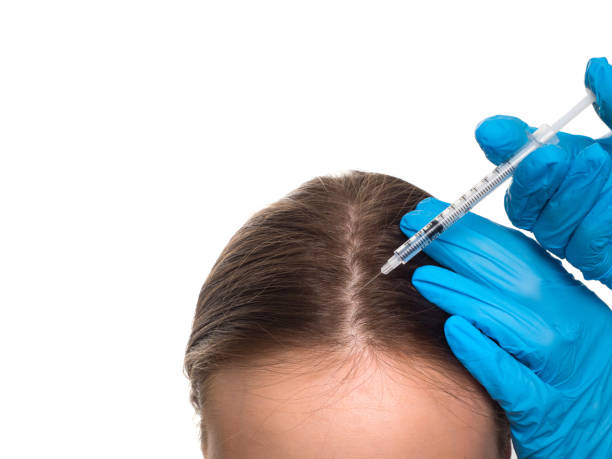Hair loss is a common concern that affects individuals of all ages and genders, often leading to diminished self-confidence and quality of life. While there are various treatment options available, Platelet-Rich Plasma (PRP) therapy has emerged as a promising solution for hair restoration. In this comprehensive blog post, we'll delve into the intricacies of PRP hair treatment, including its mechanism of action, benefits, candidacy, and what to expect from the procedure.
Understanding PRP Hair Treatment
PRP therapy is a cutting-edge medical procedure that utilizes the patient's own blood to stimulate hair growth. The process begins with a simple blood draw, typically from the arm. The drawn blood is then centrifuged to separate the platelet-rich plasma (PRP) from other blood components. This concentrated PRP, rich in growth factors and cytokines, is then injected into the scalp, targeting areas affected by hair loss or thinning.
How PRP Stimulates Hair Growth
The growth factors present in PRP play a vital role in promoting hair follicle regeneration and stimulating hair growth. When injected into the scalp, these growth factors activate dormant hair follicles, increase blood flow to the scalp, and promote the proliferation of dermal papilla cells, which are essential for hair growth. Additionally, PRP therapy helps to reduce inflammation in the scalp, creating an environment conducive to hair regrowth.
The PRP Treatment Process
PRP hair treatment is a minimally invasive procedure that can typically be completed in a single visit to a healthcare provider's office. The process generally involves the following steps:
- Consultation: A comprehensive evaluation of the patient's medical history, hair loss pattern, and treatment goals.
- Blood Draw: Collection of a small sample of the patient's blood for processing.
- Centrifugation: The blood sample is spun in a centrifuge to separate the PRP from other blood components.
- Injection: The concentrated PRP is carefully injected into the scalp, targeting the areas of hair loss or thinning.
Expected Results and Recovery
Results from PRP hair treatment are not immediate, as hair growth is a gradual process. Most patients begin to notice improvements in hair density and thickness within several months of treatment initiation. However, optimal results may require multiple treatment sessions spaced several weeks apart. Recovery from PRP therapy is typically quick, with minimal downtime and few side effects, such as mild swelling or tenderness at the injection sites.
Ideal Candidates for PRP Hair Treatment
PRP therapy is suitable for individuals experiencing various types of hair loss, including androgenetic alopecia, alopecia areata, and telogen effluvium. It is generally well-tolerated, although it may not be suitable for individuals with certain medical conditions or those taking specific medications. A consultation with a qualified healthcare provider is essential to determine candidacy and develop a personalized treatment plan.
Benefits of PRP Hair Treatment
PRP hair treatment offers several advantages:
- Non-Invasive: PRP therapy is a non-surgical procedure that does not require incisions or anesthesia.
- Safe: Since it utilizes the patient's own blood, PRP therapy carries minimal risk of allergic reactions or adverse effects.
- Effective: Many patients experience significant improvements in hair density and thickness following PRP treatment.
- Natural: PRP therapy promotes natural hair growth, resulting in hair that looks and feels like your own.
The Future of PRP in Hair Restoration
Research into PRP therapy for hair loss is ongoing, with ongoing studies exploring ways to optimize treatment protocols and improve outcomes. As our understanding of PRP therapy continues to evolve, it is likely to remain at the forefront of hair restoration treatments, offering hope to individuals struggling with hair loss.
Conclusion
Platelet-Rich Plasma (PRP) hair treatment represents a significant advancement in the field of hair restoration, offering a safe, effective, and minimally invasive solution for individuals experiencing hair loss. If you're considering PRP therapy for hair loss, consult with a qualified healthcare provider to determine if it's the right option for you. With PRP hair treatment, you can take the first step toward restoring your confidence and achieving the fuller, thicker hair you desire.





Comments